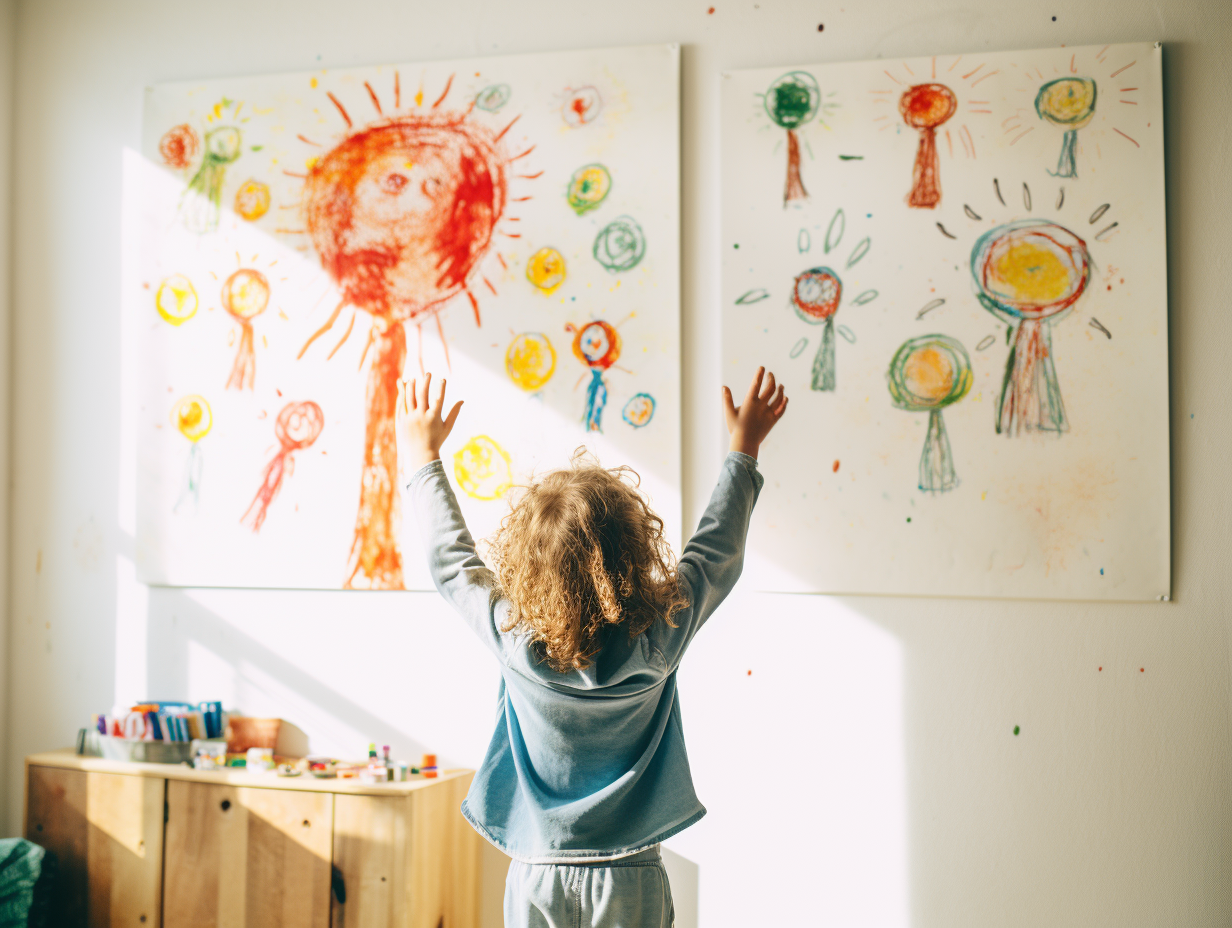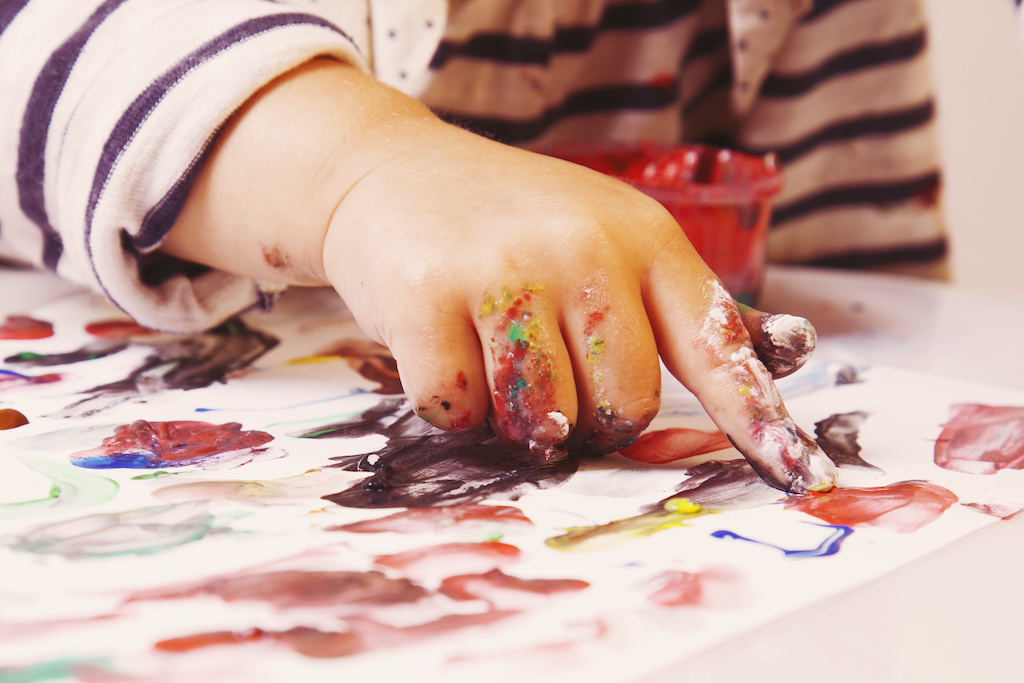
Going Beyond the Outline: Encouraging Free Drawing in Kids
Children have an incredible imagination and creativity that often knows no bounds. Encouraging them to explore their creative side through free drawing is not only fun but also vital for their overall development. In this article, we will delve into the importance of free drawing, the benefits it offers, techniques to encourage it, and how parents and teachers can play an active role in fostering this skill in children.
Understanding the Importance of Free Drawing
Children are natural artists, with the ability to express their thoughts and emotions through drawings. Free drawing allows them to break free from the constraints of structured outlines and tap into their imaginations. By providing a blank canvas, children are given the opportunity to explore their ideas without limitations, boosting their creativity and self-expression.
When children engage in free drawing, they enter a world of endless possibilities. Their imaginations run wild as they create vibrant scenes, whimsical characters, and abstract shapes. The act of putting pencil to paper becomes a form of storytelling, as they bring their ideas to life through lines, colors, and textures.

By free drawing children can tell different kinds of stories. Adobe Stock/JenkoAtaman
The Role of Creativity in Child Development
Creativity is a fundamental aspect of a child's development. Through free drawing, children learn to think outside the box, problem-solve, and express themselves in unique ways. It enhances their cognitive abilities, spatial awareness, and fine motor skills. Additionally, it fosters their self-confidence, as they witness their ideas come to life on paper.
As children engage in free drawing, they are constantly making decisions and solving visual problems. They experiment with different techniques, such as shading, blending, and perspective, to bring depth and dimension to their artwork. This process of trial and error strengthens their critical thinking skills and encourages them to take risks in their artistic endeavors.
Benefits of Free Drawing for Kids
Free drawing offers a multitude of benefits for children. Firstly, it allows them to engage in open-ended play, where there are no right or wrong answers. This freedom encourages experimentation, risk-taking, and the development of critical thinking skills. Moreover, it serves as a stress-reliever, enabling children to explore their emotions and find solace in art.
Through free drawing, children have the opportunity to express their emotions and experiences in a safe and nonverbal way. They can communicate their joys, fears, and frustrations through their artwork, providing them with a sense of release and catharsis. This emotional outlet not only helps them process their feelings but also promotes their overall well-being.
Furthermore, free drawing nurtures patience, determination, and resilience in children. As they encounter challenges during the creative process, such as mistakes or perceived imperfections, they learn to overcome obstacles and find alternative solutions. This resilience carries over to other areas of their lives, enhancing their ability to tackle setbacks and embrace new opportunities.
As children engage in free drawing, they also develop a sense of pride and accomplishment. They see the progress they make over time, from their early scribbles to more refined drawings. This sense of achievement boosts their self-esteem and motivates them to continue exploring their artistic abilities.
In conclusion, free drawing is not just a simple activity for children; it is a powerful tool for their development and self-expression. By providing them with the freedom to create without limitations, we empower them to unleash their creativity, enhance their cognitive skills, and nurture their emotional well-being. So let us encourage and support children in their artistic journeys, as they discover the joy and endless possibilities of free drawing.

Encouring children to draw beyond the lines help them to get more creative. Adobe Stock/VK Studio
Breaking the Barriers of Structured Drawing
While structured drawing, such as coloring books or traced outlines, can be beneficial in certain ways, it is crucial to encourage children to go beyond these boundaries and indulge in free drawing. By focusing solely on outlines, children's creativity can be restricted, limiting their imagination and self-expression.
The Limitations of Outline-Based Drawing
Outline-based drawing, although helpful for developing fine motor skills and hand-eye coordination, tends to stifle children's artistic instincts. It limits their ability to make decisions independently and stifles their creative freedom. Encouraging free drawing allows children to think beyond the lines and explore their ideas without restrictions.
Fostering Imagination through Free Drawing
Free drawing unleashes a world of imaginative possibilities for children. It encourages them to visualize their thoughts, dreams, and stories in a way that structured drawing cannot. By providing a blank canvas and a diverse range of drawing materials, we ignite their imagination and inspire them to create artwork that is uniquely their own.
Techniques to Encourage Free Drawing
Creating an environment that fosters free drawing is essential to encourage children to explore their creativity fully. Here are some techniques that can be employed:
Creating a Conducive Environment for Drawing
Set up a dedicated space for drawing, equipped with a variety of art supplies and a supportive atmosphere. Choose a place with good lighting, comfortable seating, and enough space for children to spread out and immerse themselves in their creations. This safe and inviting space will entice children to engage in free drawing regularly.
Introducing Different Drawing Materials
Offer a wide selection of drawing materials, such as colored pencils, markers, watercolors, and pastels. Experimenting with different tools broadens children's creative horizons and helps them discover their preferences. Furthermore, using a variety of materials encourages sensory exploration and allows for unique textures and effects in their artwork.

Offering different materials encourages children to express themselves in different ways. Adobe Stock/zwiebackesser
Overcoming Challenges in Free Drawing
While free drawing can be a source of joy and self-expression, it is not without its challenges. Teaching children how to overcome these obstacles will enable them to embrace the creative process wholeheartedly.
Dealing with Frustration and Perfectionism
Artistic endeavors can sometimes lead to frustration, especially when the final result does not match the vision in a child's mind. Encourage children to embrace mistakes as learning opportunities and remind them that art is subjective. By focusing on the process rather than the outcome, children can appreciate the unique beauty of their creations.
Encouraging Persistence and Patience
Free drawing often requires patience and perseverance, as children explore different ideas and techniques. Encourage them to stay determined and not give up easily. Remind children that practice makes perfect and that every stroke brings them closer to their desired outcome. Celebrate their progress and highlight the value of dedication and hard work.
The Role of Parents and Teachers in Encouraging Free Drawing
Parents and teachers play a crucial role in nurturing and encouraging children's creativity through free drawing.
Positive Reinforcement and Constructive Criticism
Offer frequent praise and positive reinforcement when children engage in free drawing. Acknowledge their effort, commitment, and ideas. Additionally, provide constructive criticism to help them improve their skills without discouraging them. Encouraging feedback helps children understand that mistakes and growth are essential parts of the creative journey.
Incorporating Free Drawing in Learning Activities
Integrate free drawing into various learning activities to demonstrate its value and versatility. Whether it is storytelling, science projects, or math problems, encourage children to incorporate art into their understanding of different subjects. By embracing art as a tool for learning, children will develop a deeper appreciation for creativity and its relevance in all aspects of life.
In conclusion, encouraging free drawing in children is an invaluable endeavor that unlocks their imagination, promotes self-expression, and nurtures their overall development. By going beyond the limitations of structured drawing and providing a conducive environment, we empower children to explore their creativity freely. Parents and teachers have a vital role in supporting and guiding children on this artistic journey, fostering resilience, and inspiring a lifelong love for art.
